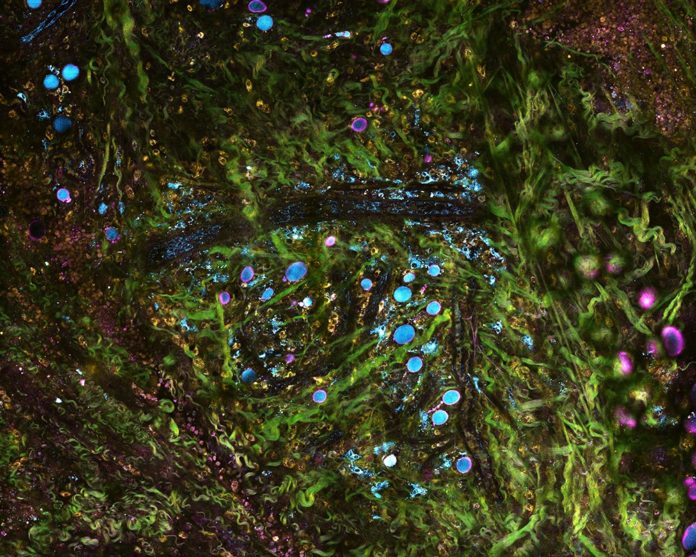Illinois researchers have developed a new microscope system that holds the potential to capture living tissue in real-time and in molecular detail. The most fascinating is that it doesn’t require additional chemicals or dyes.
Using this system, scientists can easily study concurrent processes within cells and tissue. It can also be mimicked as a tool that provides insights on tumor progression.
Scientists named this microscope simultaneous label-free autofluorescence multi-harmonic microscopy. It uses precisely tailored pulses of light to image with multiple wavelengths simultaneously.
Video courtesy of Stephen Boppart
The microscope is utilized on living tissue, even inside a living being, allowing it to be utilized for clinical diagnosis or to control medical procedures in the working room. Second, it utilizes no colors or synthetic concoctions, just light.
In addition, microscopy simultaneously gathers different differentiations from cells and tissues, catching sub-atomic level points of interest and elements, for example, digestion.
During the study, scientists observed mammary tumors in rats alongside the encompassing tissue condition. Because of the concurrent information, they could watch the range of dynamics as the tumors advanced and how different procedures interact.
Sixian You, the first author of the paper, said, “We know the tumor is there, but tumors support a whole ecosystem in the tissue. They recruit healthy cells to support them. SLAM gives us a comprehensive picture of this ever-evolving tumor microenvironment at subcellular, molecular and metabolic levels in living animals and human tissue. Monitoring that process can help us better understand cancer progression, and in the future could lead to better diagnosis of how advanced a tumor is, and better therapeutic approaches aimed at halting the progression.”
The researchers saw that the cells near the tumor had differences in metabolism and morphology, indicating that the cells had been recruited by cancer. In addition, they observed surrounding tissues creating an infrastructure to support the tumor, such as collagen and blood vessels. They also saw communication between the tumor cells and the surrounding cells in vesicles, tiny transport packages released by cells and absorbed by other cells.
Now, scientists will use their technique to compare healthy and cancer tissue in both rats and humans, focusing particularly on vesicle activity and how it relates to cancer aggressiveness. They are also working to make portable versions of the SLAM microscope that could be used clinically.
Dr. Stephen Boppart, a professor of bioengineering and electrical and computer engineering at Illinois and a medical doctor, said, “There is a wealth of new data, information, and biomarkers in the images we collect from fresh tissue that is still metabolically active, or in living organisms, where we can visualize the dynamics of individual cells and their collective behaviors.”
“These, we expect, will become new markers for diseases such as cancer, and our imaging technology will help detect these for disease screening, diagnostics, and monitoring applications. We believe that this technology will open the possibility of complementing, or even replacing, standard histopathology processing, which is time- and labor-intensive and can only be done on removed, fixed, dead tissue.”
Scientists detailed their technique in the journal Nature Communications.
